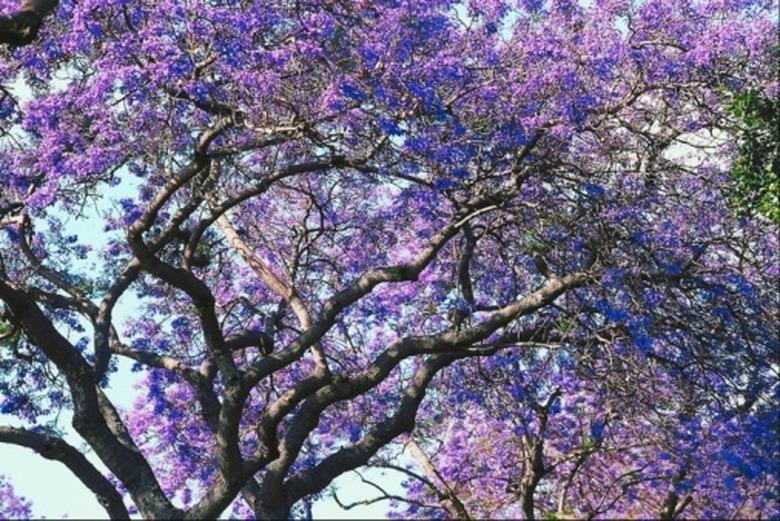How To Plant Jacaranda Seeds
Producing a breathtaking canopy of purple guaranteed to draw the attention of all who gaze upon this tropical beauty, jacaranda (Jacaranda mimosifolia) propagation via seeds is relatively basic. Even novice or black thumb gardeners will have success growing jacaranda from seeds, especially in U.S. Department of Agriculture plant hardiness zones 9b through 11, provided they follow a few simple tips to get the seeds and seedlings off to the best start.
Jacaranda Noteworthy Characteristics
Also known as black poui, this tropical tree that's native to South America makes a stunning and eye-catching specimen with its delicate, green fern-like foliage and colorful display of purple blooms. The fast-growing tree reaches 25 to 40 feet tall at maturity, with a spreading canopy that can grow up to 60 feet wide. Jacaranda has a deciduous habit, and its light and airy foliage makes it a good choice for areas where dappled shade is desired. However, the tree's fast growth rate makes the wood weak and prone to breakage, so be sure to plant it away from structures where falling limbs can cause damage.
In early spring and summer — sometimes before the new foliage appears — the canopy bursts into life with a sea of purple. Long panicles up to 18 inches long fill with trumpet-shaped flowers, making the tree a sight to behold. Eventually, the spent flowers form into round, brownish-black seedpods filled with thin, papery seeds. Fallen seeds sometimes germinate underneath the mother tree where you can easily dig up a jacaranda seedling to replant. Although the purple flowering variety is most commonly identified with jacaranda, 'Alba' produces white flowers although the canopy of blooms isn't as dense.
Collecting and Preparing Jacaranda Seeds
Jacaranda trees eventually drop the seedpods once completely ripe, but you'll have the best germination success taking the fresh seeds directly from the tree before they fall to the ground. Once the jacaranda seedpods turn brownish-black, you can easily snip them off the tree using clean hand clippers. Jacaranda seeds do have a high germination rate of up to 85 percent, but they don't store well, so it's best to plant your gathered seeds as soon as you harvest them.
The seedpods naturally split open once ripe, but you may need to give those harvested from the tree a bit of help. This is as easy as cracking the seedpod open to reveal the thin, papery, winged seeds held inside. There's no need for advance preparation when it comes to planting jacaranda seeds, and once you have the medium and pots prepared, you can simply plant the fresh seed.
Planting Jacaranda Seeds and Aftercare
Once you have your fresh jacaranda seeds, it's time to prepare your containers for planting. You can use a seed-starting tray, small pots, or biodegradable pots to plant the seeds. Just make sure the pots drain and don't collect water, making the soil too moist, or the seeds will rot. Fill the pots with a sterile, lightweight seed-starting mix or a potting mix that isn't heavy and then moisten the medium with water so the planted seeds remain in place once planted.
Plant the seeds in the prepared pots, thinly cover them with about 1/4 inch of soil and lightly moisten the soil again. Place the pots in a sunny location where temperatures are warm and keep the soil moist but not soggy. Temperatures from 75 to 80 degrees Fahrenheit are optimal for good germination, which should occur in a couple of weeks. Once the seedlings reach around 4 to 6 inches tall, you can move them to a pot one size larger than the one you started them in, being sure to plant in a lightweight mix.
Grow the jacaranda seedlings in a sunny outdoor location and continue watering when the top inch of soil becomes dry. Although jacaranda trees grown from seed take longer to bloom than grafted types, you should see your tree starting to bloom after several years. Before you know it, you'll be enjoying a landscape filled with the tree's purple display of fabulousness.
